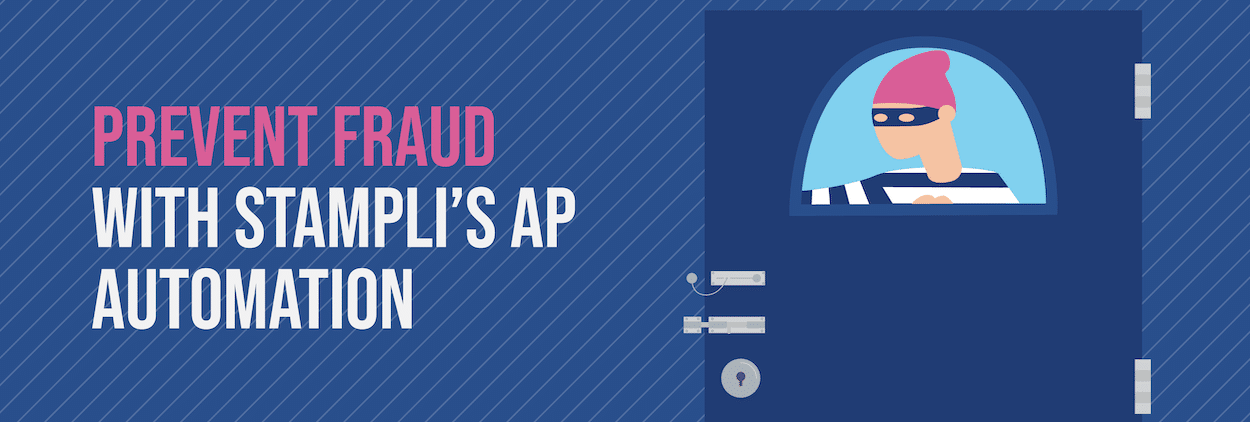The 5 Most Common Types of Accounts Payable Fraud & How to Prevent Them
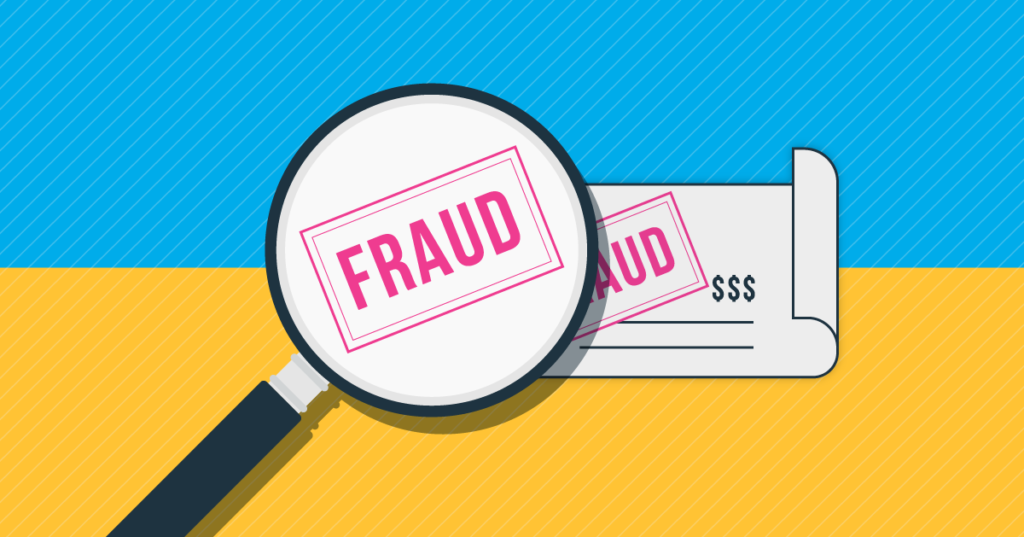
Could just one email cost your company $8 million dollars? That is exactly what happened to multi-billion dollar company Advance Publications. A regular vendor sent an email to Advanced Publications’ accounts payable department letting them know they had switched bank accounts. The email looked legitimate and raised no red flags.
The problem was the email wasn’t from the vendor at all, but rather from a conman named Andy Surface. Mr. Surface had established a company with a very similar name to the vendor and sent the email himself.
Nearly $8 million was deposited into the account Mr. Surface controlled before Advanced Publications realized something was amiss.
Think this could never happen to your business? Think again.
Nearly 40% of business owners and senior managers say they would agree to pay accountancy fees to a new bank account without ever checking to confirm the new instructions.
In addition to billing schemes, there are several other common AP frauds that hundreds of companies fall victim to every year. Could your company be next?
AP Fraud: What Every Controller Needs to Know
Despite the best efforts of business executives, financial officers, controllers, and IT personnel, AP fraud continues to happen right under the noses of businesses across nearly every industry and country.
AP fraud is particularly damaging to businesses due to the scope and amount of money that is involved. Unlike other types of fraud, such as returns fraud or workers’ compensation fraud, AP fraud can be notoriously difficult to detect, particularly if businesses aren’t using the newest methods of AP fraud protection.
In large companies, the symptoms of AP fraud often get lost in bureaucratic red tape.
However, AP fraud isn’t just a problem for large businesses. While large companies like Facebook and Google are at risk, companies of any size can fall victim. In fact, fraudsters often target small companies hoping that the lack of resources will allow their tactics to prevail.
According to one study, half of all small businesses are at risk of AP fraud. In many cases, the employees and staff are conned into making what they think are legitimate payments right into the fraudster’s hands. In other cases, the employees themselves are behind the fraud.
A recent report from the Association of Certified Fraud Examiners found that businesses lost a total of $7 billion in 2018 due to fraud. The median loss per business across all industries was $130,000 per case, and 22% of fraud cases resulted in losses of $1 million or more.
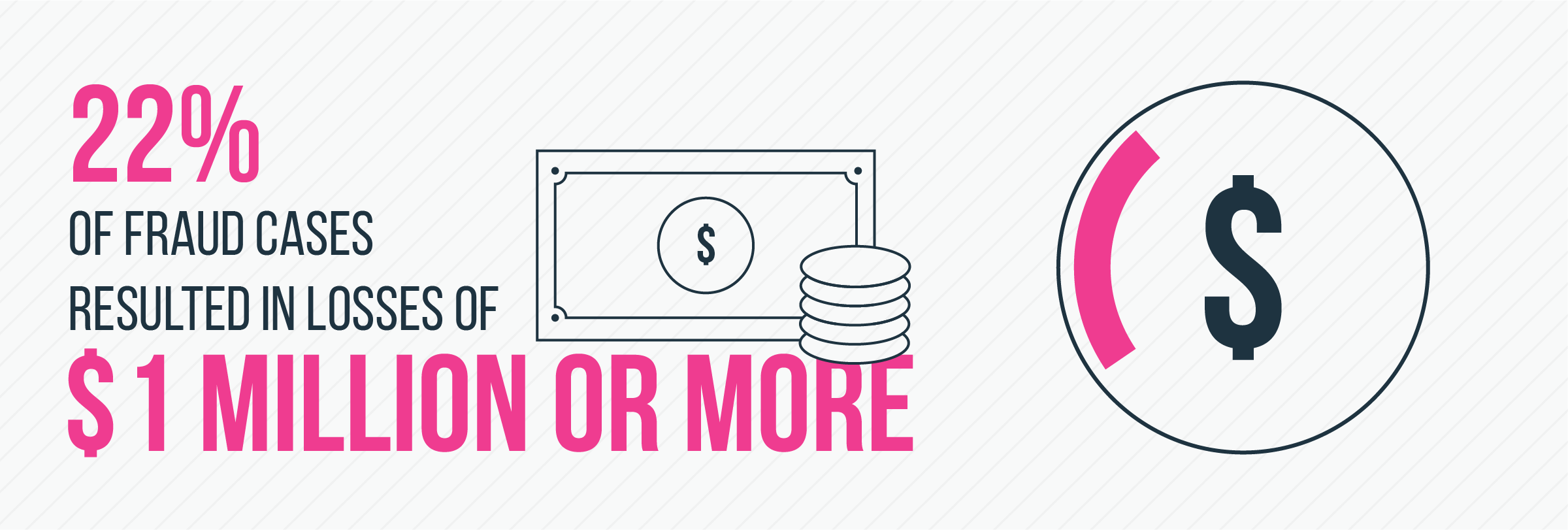
If your company isn’t prepared to detect and prevent AP fraud, you could be losing thousands or millions of dollars without even realizing it.
What Are the Most Common Types of Accounts Payable Fraud?
Accounts payable fraud impacts thousands of businesses both large and small every year. This is due to several factors, including how easy fraud is under traditional AP processes and increased sophistication on the part of fraudsters. In most cases, AP fraud is perpetrated right under the noses of businesses and, in many cases, with their unwitting cooperation.
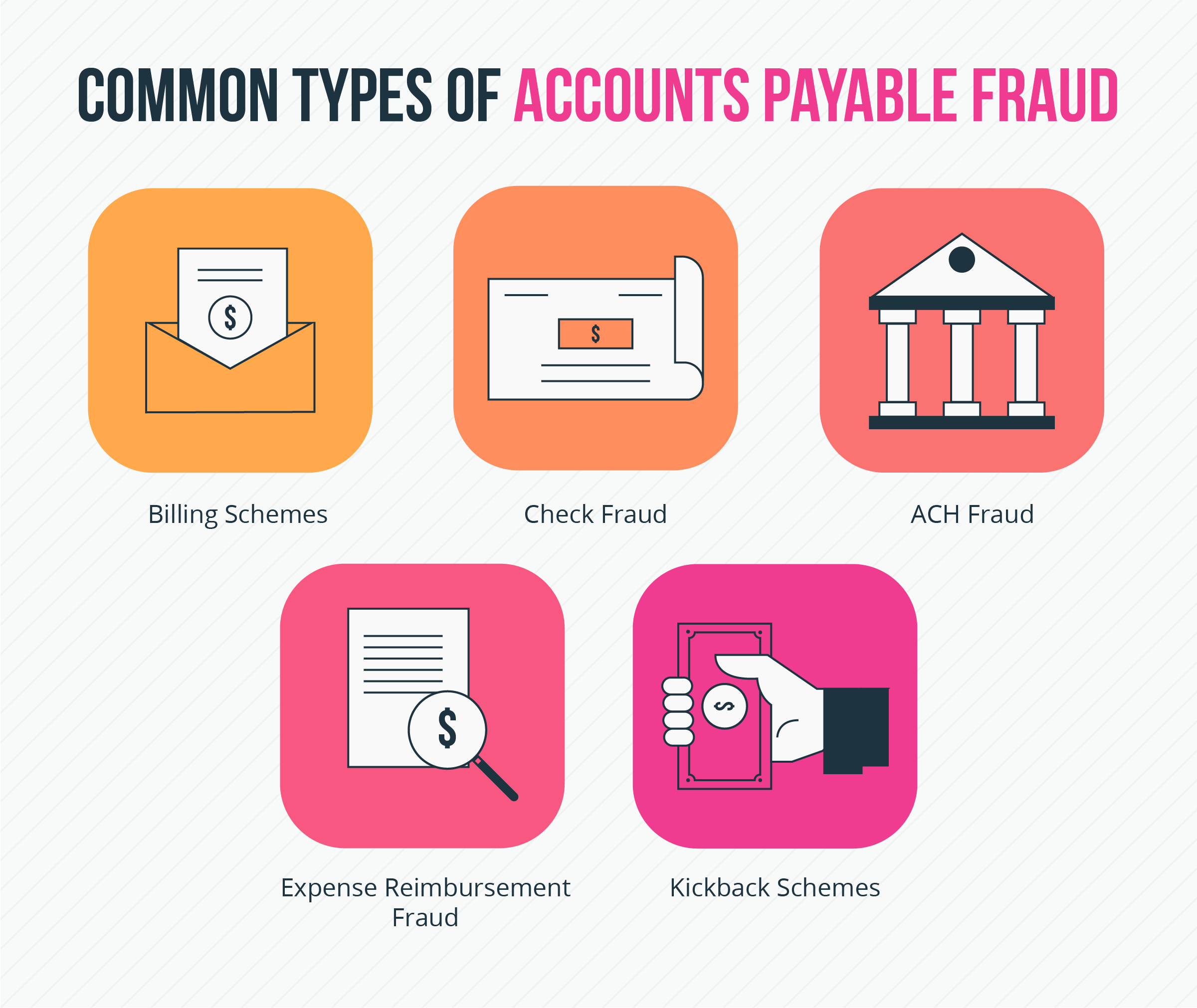
What types of fraud should your business be on the lookout for? Read on.
Billing Schemes
These types of schemes are often perpetrated by employees or with their knowledge and can vary in sophistication. For example, an employee might generate a fake invoice, then ‘pay’ the invoice for services or products that were never delivered.
Or, an AP person might double pay for an invoice by writing and mailing two checks. Before the second check arrives, AP calls the vendor and says they accidentally cut two checks, and asks them to send one back to a specified address or office location to a specific person in AP. That specific person in AP then goes to the bank and creates an account in the vendors name, and deposits the check and converts to cash. Since this AP person is an authorized signer, writes themselves a check or wire the money to their personal bank account.
Check Fraud
A recent study found that more than three-quarters of all businesses impacted by AP fraud were victims of check-related fraud. Check fraud might include adjusting the amount a check is made out for, changing the payee, or writing checks for personal expenses from a business account.
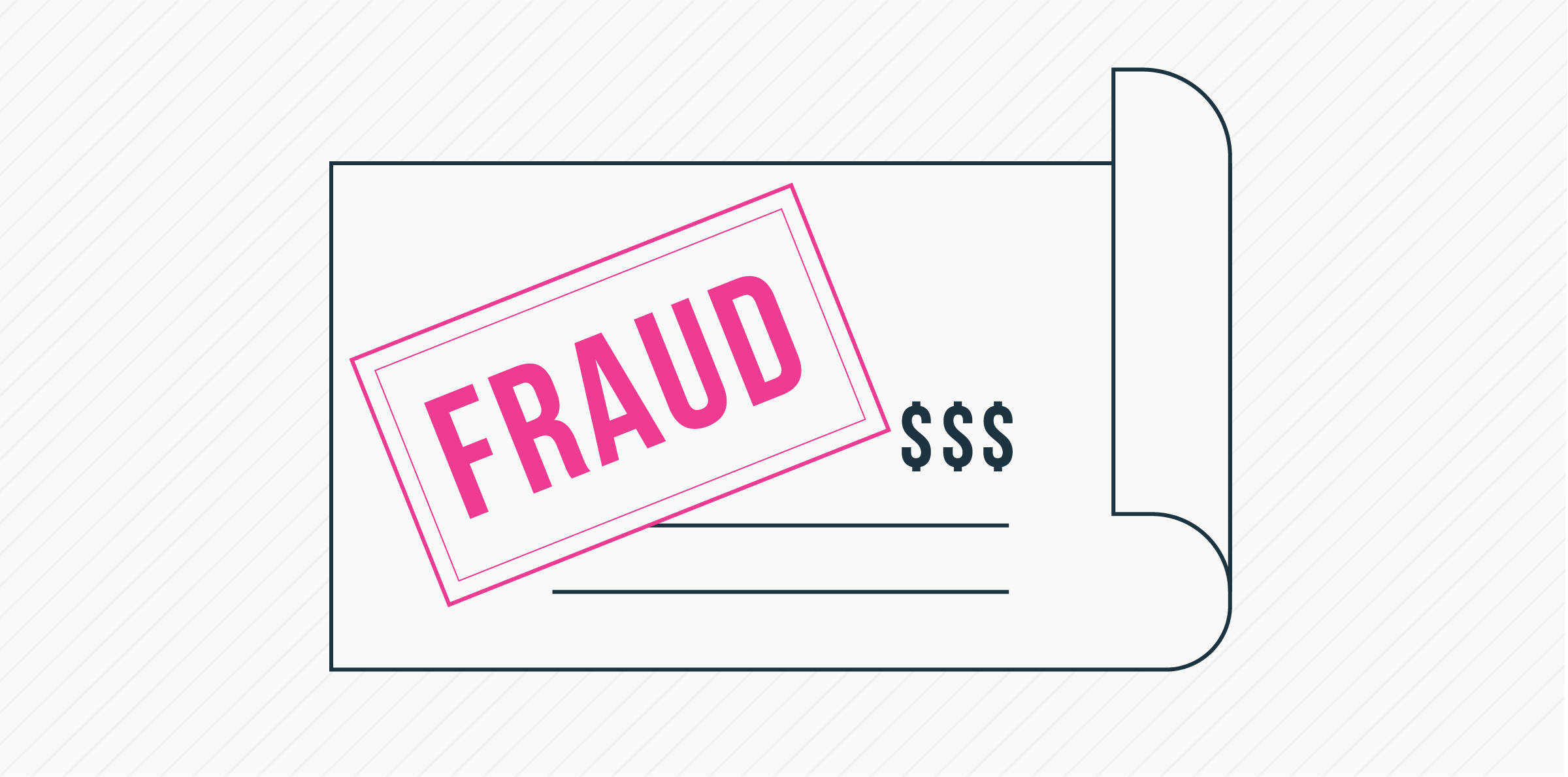
ACH Fraud
ACH payments fraud occurs when someone (often employees of the business or hackers) gain access to funds as they pass through an automated clearing house used to process electronic fund transfers. The employee or fraudster may gain access to files through a keylogger or other means.
Once the fraudster has access to files, they may engage in Vendor Impersonation Fraud (VIF). This occurs when a fraudster edits a current vendor profile to send legitimate payments to their personal account.
Expense Reimbursement Fraud
Expense-related frauds can be notoriously difficult to uncover and often last years. These types of frauds can occur when an employee makes purchases on a personal card and submits an expense report, overstates expenses, purposefully submits duplicate reports, or creates fictitious expenses for items never purchased. While the amounts may be small to start, they can quickly add up over time if the fraud is not uncovered. Implementing an automated expense management system can significantly reduce the risk of such fraud by streamlining processes, ensuring real-time tracking, and flagging anomalies for further review.
Another type of expense fraud can occur when an employee makes a purchase on their personal card, and receives payment from their employer. Then returns the item and receives a refund. Sometimes this happens out of good faith and the employee simply forgets. This is why a lot of businesses prefer to use p-card or corporate AP credit cards so they can receive the refund.
Kickback Schemes
Kickback schemes can be one of the most damaging types of fraud, due to the help of an insider and the circumvention of protocols. These schemes occur when an outside party offers an employee money to sway business decisions, such as vendor selection. As a result, critical business decisions are made based on who can line the pockets of one of your own, rather than what is best for your customers. It can also lead to other types of fraud, such as billing schemes, down the line.
Preventing and Detecting AP Fraud
The major challenge of AP fraud is that it is notoriously difficult to detect without structural changes to business processes. While changing policies and implementing new safeguards may be frustrating and time-consuming, protecting the future of your company and your employees is worth the time. Here are three strategies for safeguarding your company from AP fraud.
Understand Benford’s Law
Benford’s Law is a principle that outlines the frequency at which all numbers are used in a set of natural numbers. It states, for example, that the number 9 will appear as the first digit in a set of naturally occurring numbers less than 5% of the time.
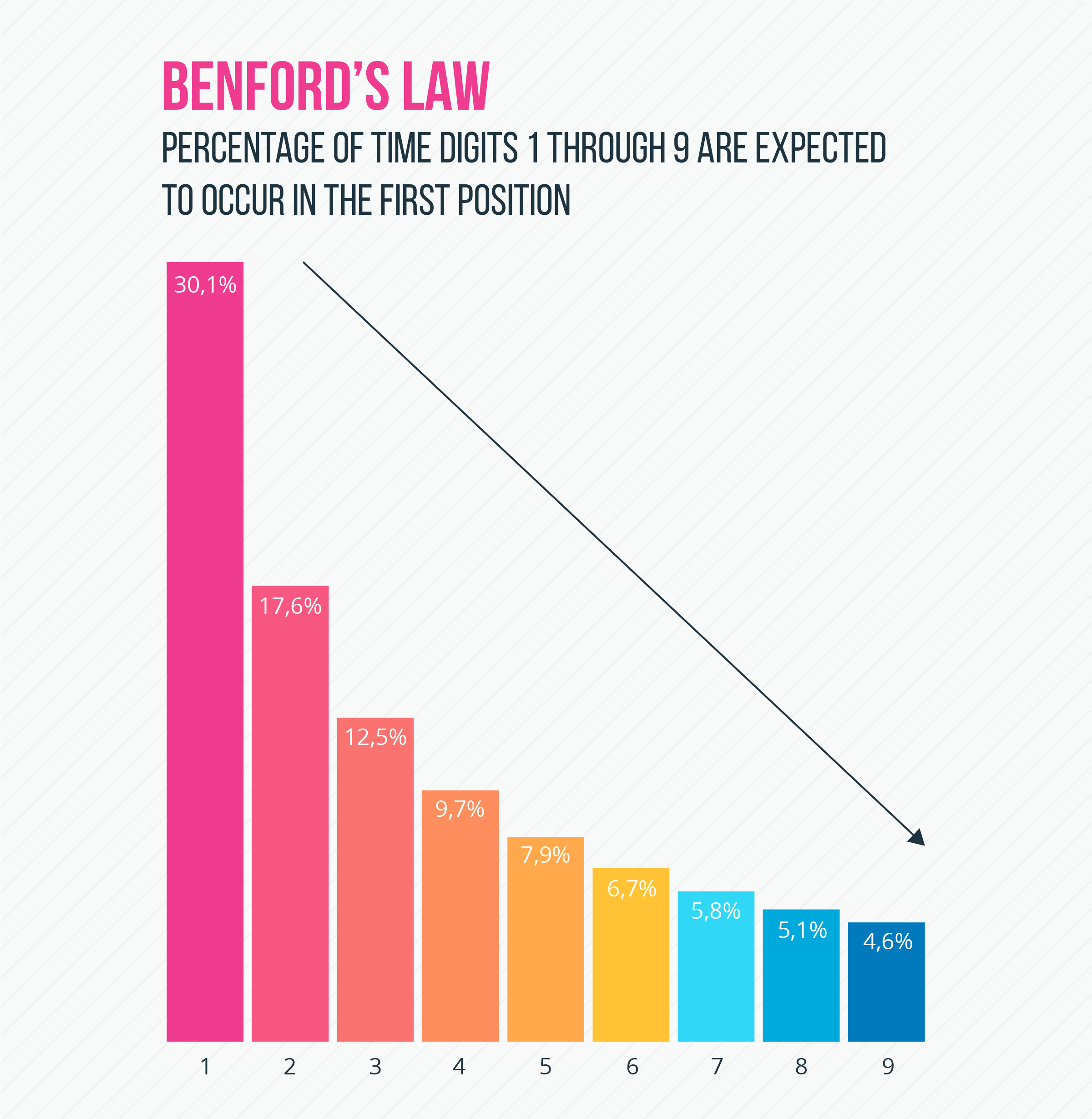
An example of this in practice: A company requires a manager to approve all invoices over $10,000. An employee submits duplicate invoices in the range of $9,000 to avoid triggering the approval process. As a result, far more than 5% of invoices starting with the number 9, which indicates a likelihood of fraud. Flag invoices or accounts that violate Benford’s Law and review for fraud.
Take Advantage of Automation & Machine Learning
In most cases, fraud occurs because the overwhelming day-to-day details of running a business make noticing errors and patterns incredibly challenging. When an employee is processing hundreds of payments a month, for example, they often don’t have time to look for trends or double-check changes.
AP automation tools can help businesses improve the AP process and prevent fraud by flagging suspicious changes. They don’t miss the details, and they don’t make human errors. Stampli helps automate the AP process and centralizes communications so that fraud is much easier to detect.
Our system uses machine learning to look for duplicate invoices, track vendor changes, and flag changes or trends that look suspicious. Using Stampli, you can focus on running your business while our software keeps an eye on the details that could leave you susceptible to AP fraud.
Stay Updated on New Frauds & Fraud Prevention Processes
As technological solutions creep into every part of our lives, fraudsters have more and more tools at their disposal. Some cons include forged paperwork, hacking, and the use of keystroke loggers that whisk away passwords and account information without you even realizing what is happening.
Staying up to date with the newest strategies and fraud prevention processes means you can build processes to protect your company before you fall victim to the newest fraud strategies.
Final Thoughts
Most companies, particularly smaller businesses, assume they are safe from fraud due to their relatively low profits. However, small businesses lose almost twice as much per scheme, with a median loss of $200,000 per case.
All businesses need to pay attention to the rise in AP fraud and implementing processes to protect themselves. Businesses large and small are being hit; could your company be next?
